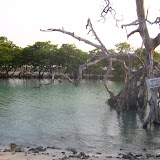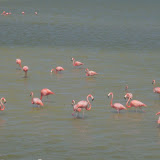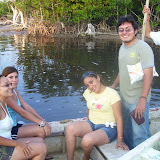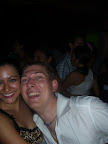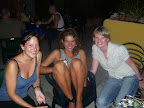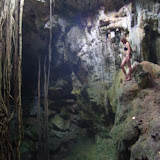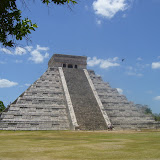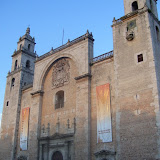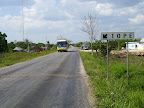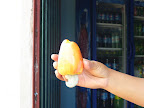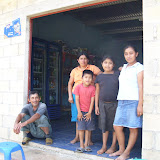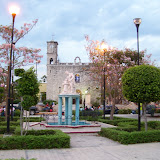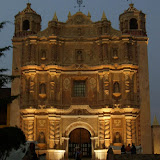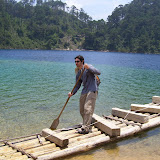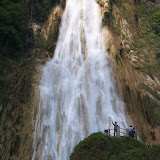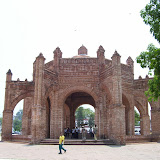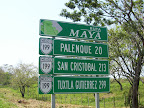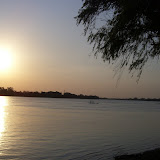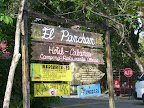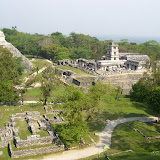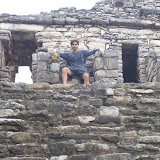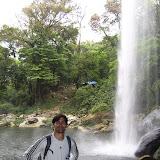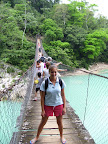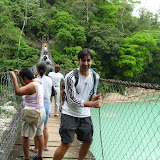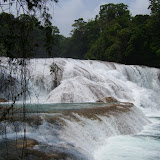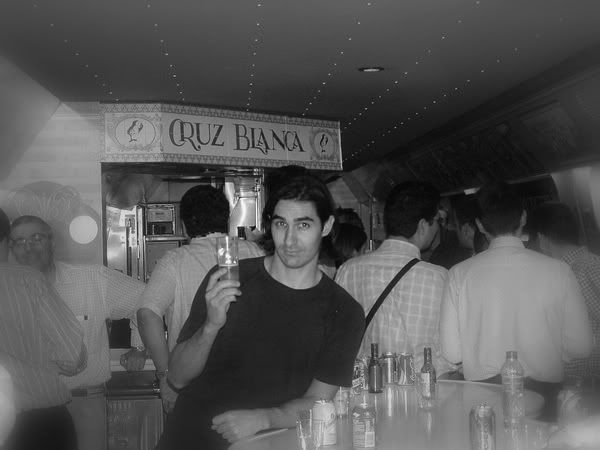Isla Mujeres, 3 stars
To get away from the hectic Cancun area, take a 40 min. ferry to Isla Mujeres, it is well worth the 45 pesos. The authenticity is surprising, it has a normal pueblo with a normal center with normal people, but there is one walking street full of tiendas and restaurants that try to hustle you to buy stuff. The North beach is your typical Caribean beach, a little crowded, but not overwhelming, the rest of the island is cliff or marsh. I bike ride around the island takes 30 mins and the cliffs although not recommendable for swimming or climbing make for a great view. The tourist traffic was surprisingly low, it is the off-season but comparitivly low traffic for a major stop. The place is a bargain, the hostel Poc Na is a must stay, 65 pesos to camp, 100 for dorm and 250 for a cabin, and affiliated to Hostel Nomadas in Merida. It is right on the beach, has 2 bars and a full service kitchen. The price of food and drinks is reasonalbe as well, there are expensive restaurants, cheap restaurants and super markets, all normaly priced and 2 for 1 specails in every bar.
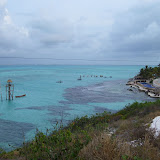 |
| Isla Mujeres |
Cancun, 2 stars
There are 2 faces to Canucn, the town and the hotel zone. The town is dangerous, Mexicans are afraid to go there, it's like a small Mexico City. In contrary, the hotel zone is clean, safe, and very American, McDonalds and malls on every corner shadowed by luxious hotels, reminds me of Vegas a bit, so 0 authenticity. The beaches are breathtaking, and they get bigger and better the farther south you go, I loved that part of Cancun. It is not cheap, nothing is cheap there, if you want cheap you have to brave the city, but it isn't worth your life. Cancun doesn't have an off-season there are always people everywhere and the majority are Americans. Cancun is what it is, built for American Spring-breakers and people that don't know what to do with all their dough. I did a tour of the hotel zone on thier 25km ciclopista stopping at all the happening public beaches.
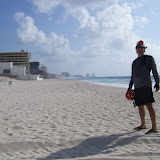 |
| Cancun |
Playa de Carmen, 1 star
Playa de Carmen is good for 3 things, staying in an all inclusive resort, visiting thier fashionable (and pricey) 5th avenue, and taking the ferry to Cozumel, other than that the city doesn't have much to offer. Many of it's residents are like Mexico City and Cancun, impoverished indigenous workers (many build the resorts) from Chiapas. These are people looking for a better life, can't afford to cross the border, and try their hand at the Riviera Maya, many don't make it, which can create an unsafe street environment. As a result this was the first place I met homeless people in the hostals. It gets 1 star because I'm sure the resorts are really nice, but I would recommend my fellow backpacker or byciclist to pay the 110 pesos and take the ferry to Cozumel.

Tulum, 4 stars
I loved this place, it is my kind of destination. The pueblo is still a pueblo, and the beach (called Paila Boca) is a good mile away from it. A big white empty semi-nude caribean beach, what else do you want. Really low tourist traffic? It has it. Very afforadable? Definitly, I got my own cabin ON the beach for 200 pesos, it included an unobstructed view of the ruins and the ocean. The ruins are 100 yards from the cabins, they are on a cliff overlooking you beach (surreal), takes about an hour to see the whole thing and after the tour you can take a dip in the beach under the pyramid. Tulum is cool, there is not a lot to do there, beach bumming is the preferred past-time, and that just happens to be my specialty (biking is now no. 2).
 |
| Tulum |
Off the Riviera Maya
Valladoid
Valladoid is a colonial city in the middle of the Yucatan Peninsula, makeing it a great hub to see some of the many attractions in the Yucatan. Cenotes abound, if you like cenotes they are all around and IN Vallaolid. Ruins, the famous ruins Chichen Itza are 40 mins west, the jungle ruins of Coba an hour east and the well restored ruins of Ek Balam 20 minutes north. From the same people that brought you hostal Poc Na in Isla Mujerees and Nomadas in Merida, bring you La Candalaria here, an excellent place to stay, right off a sleepy plaza and full of backpackers from around the world.
 |
| Valladolid |
NEWS Flash
I actually met some Americans in the hostal in Valladolid, and they were from Austin of all places, came in for a wedding of a couple of bartenders at the Red Eye Fly on Red River. We split a 6 of beers and played some bones to comenorate the event.
The ruins of Ek-Balam 20km north of Valladolid, a lot more compact than most.
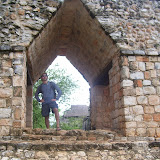 |
| Ek Balam |
Cenotes 5km from Valladolid, the pics blow but the caves derserve representation.
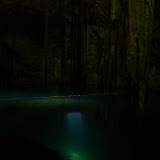 |
| Cenotes in Dzitnup |
COBA ruins (between Valladolid and Tulum)
These ruins cover a large area, 8,000 acres I believe, so I didn't get too far on my bad knee at the time but here are the few pics I did manage to rattle off.
 |
| Coba |




